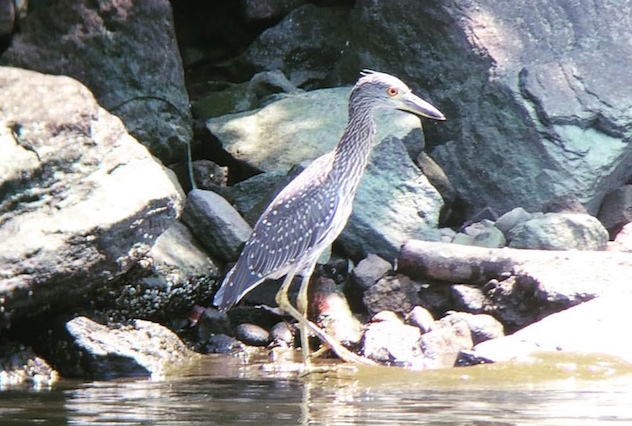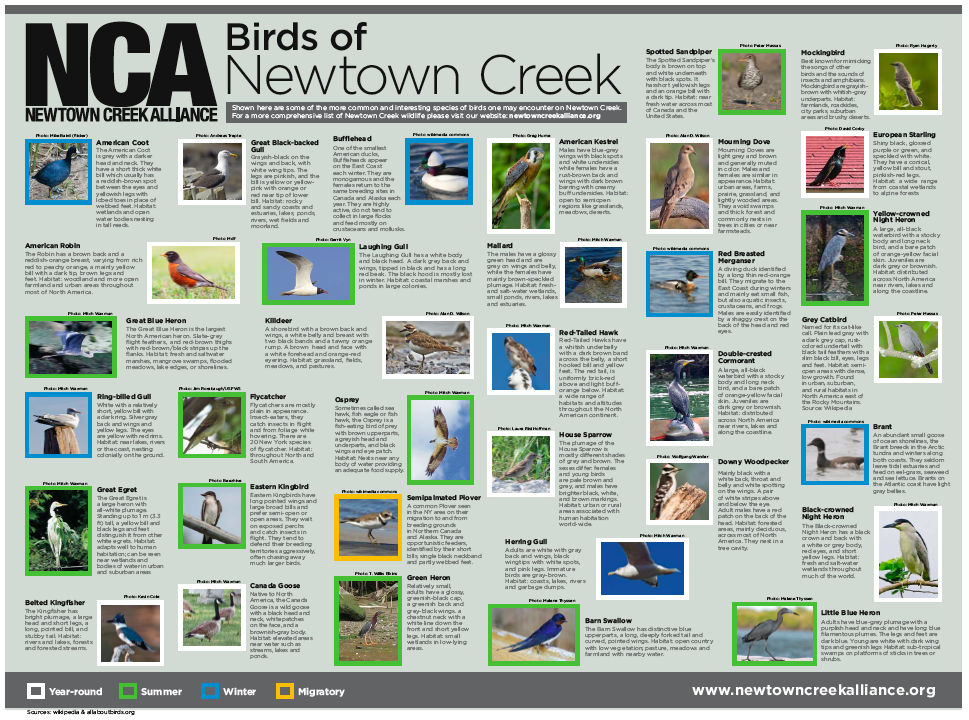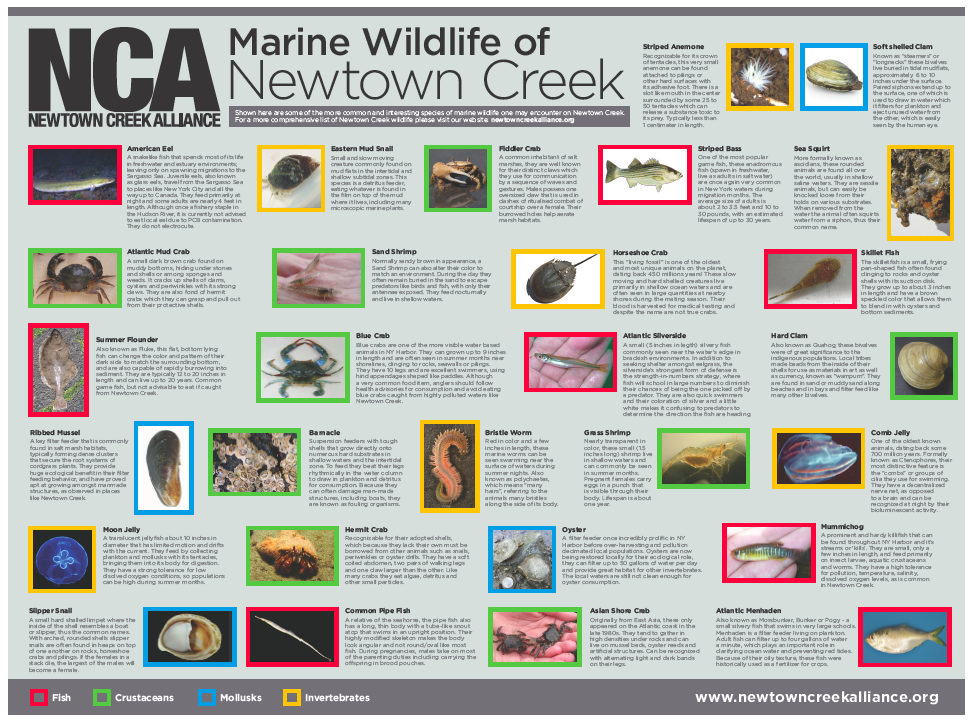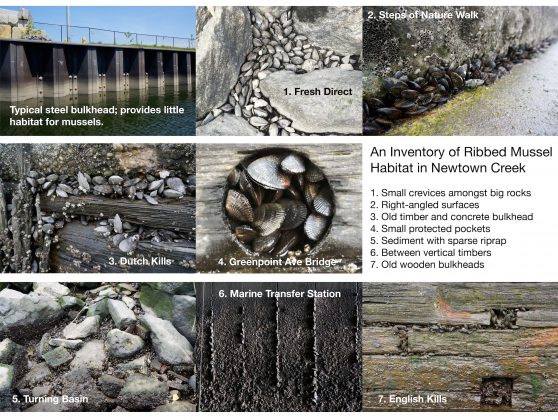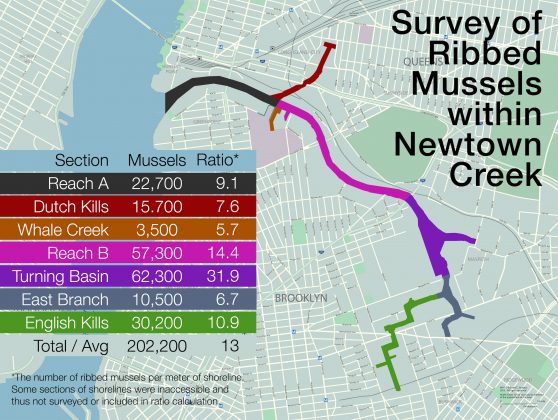As a vibrant salt marsh, Newtown Creek and its tributaries where once home to a variety of animal and plant species that thrived in the intertidal estuary ecosystem. Despite the denigration and pollution of the environment wildlife is returning to Newtown Creek. For the past few years, NCA has been taking greater note of the wildlife present in the creek. Check out our working list of wildlife observed within Newtown Creek and posters below.
Birds of Newtown Creek
NCA has created a poster to display many of the birds that have been seen on the Creek. Download a high resolution version of the poster, designed by Mai Armstrong, here. Or come to an NCA event to get your own print copy for free.
Marine Wildlife of Newtown Creek
NCA has created a poster to display much of the common and interesting marine wildlife that are currently living within the Creek. Download a high resolution version of the poster, designed by Mai Armstrong, here. Or come to an NCA event to get your own print copy for free.
Ribbed Mussel Survey
Over the course of 2016, NCA completed an exhaustive survey of the Newtown Creek shorelines noting locations and populations of ribbed mussels which reside in the intertidal zone (area between low and high tides). As native filter feeders, these mussels help remove bacteria and improve water quality. They are a keystone species of a salt marsh, and were once very prevalent within Newtown Creek as evidenced by Mussel Island, a shoal within the Turning Basin area which was dredged out for navigation purposes in the early 20th century. With limited natural shallow water habitats in the Creek today, these mini cleaning creatures have made use of various shoreline substrates that provide enough surface area to attach themselves to. One of the key findings from our survey was that ribbed mussels can be found throughout the entire Creek, with shoreline surfaces being the main factor in allowing survivability. This survey demonstrates the value in designing shorelines and bulkheads with features that can sustain intertidal communities. Click on images to the right for more documentation.
